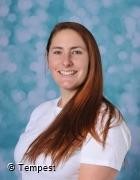Art
Leader: Mrs C Davidson

| ST JOSEPH’S CURRICULUM – ART | ||
| INTENT | IMPLEMENTATION | IMPACT |
|
At St Joseph’s school we believe high quality art lessons will: Inspire children to think innovatively and develop creative procedural understanding. As children progress in their learning they should develop a more rigorous understanding of art and design. Children should know how art and design both reflect and shape our history and contribute to the future and creativity around the world. The art curriculum is intended to be delivered as a distinct subject with clear sequence of lesson incorporating clear vertical links throughout the school ensuring learning is deep and transferable year on year. Through the study of specific artists and art forms, teaching staff will be able to make tangible links between art and the wider curriculum. A broad range of artists are studied across the curriculum from a range of genders, social-economics background, nationality and races. Teaching staff will endeavor to select artists who have not benefited from formal training to demonstrate that success in art is attainable for all. Children are encouraged to take risks, experiment and then reflect on why some ideas and techniques are successful or not for a particular project. Sketchbooks are used to record and develop and experiment with skills taught in years 1-6. In lessons children are encouraged to be reflective and evaluate their work, thinking about how they can make changes and keep improving. Teaching staff ensure this is meaningful and continuous throughout the process, with evidence of age related verbal and written reflection. |
The art lead will provide all staff with information to support knowledge and skills ensuring all teaching staff feel supported and knowledgeable in delivering the art curriculum. Children will be taught about key artists from a particular movement. They will explore the biographical detail of the artists and how this may have informed their work. Children will explore the movement of artists studied and explore where the movement is in art history time line, each year building on their knowledge and understanding of the history of art. Alongside the specific artists studied, children will have the opportunity to revisit previous years focus artist to review and reflect on prior knowledge and see how it links with their new focus. To ensure progression within the subject - Children will be expected to mirror or recreate key works of art in EYFS, KS1 and lower KS2 with some artistic decision being made so it differs from the original. Pieces in Upper KS2 should be original pieces that utilise the features of a movement. Skills progression will be tracked throughout the school to ensure the artistic abilities reflect those of the national curriculum. Vertical links are visible through repeated media and styles of painting. Portraits form the basis of artist study in year R, 2,4 and 6. Whilst landscapes are incorporated into artist study in year 1,3 and 5 Year groups alternate with the use of collage, textiles, and print. Sketchbooks provide children with the opportunity to develop their skills and ideas. Teachers set a learning objective, children then have ownership on how they express and experiment using skills taught. Using peer assessment and discussion to support progression. Teaching staff immerse children in the movement and art form studied by using writing across the curriculum and cross curricular planning. A skills progression document will be used to ensure children produce work that is ARE or greater with cross moderation taking place in each year group. |
Our art curriculum is high quality, well thought out and is planned to demonstrate progression. Teaching staff are confident through knowledge and understanding to support children in expressing and experimenting with different art movements and forms. Children feel confident in expressing and experimenting through art and can make links through the wider curriculum. Children feel a sense of achievement when reflecting on their progression shown in their sketchbooks and different art forms produced. Children are able to discuss, analyse, evaluate and show appreciation of the work of established artists, themselves and each other. Assessment is an integral part of the process and will be carried out through constant reflection by each child and revisiting skills taught and work produced. Assessment will also be made by teaching staff through formative assessment to ensure progress of all children and summative assessments are made at the end of each term. |
 St Joseph's Catholic
St Joseph's Catholic